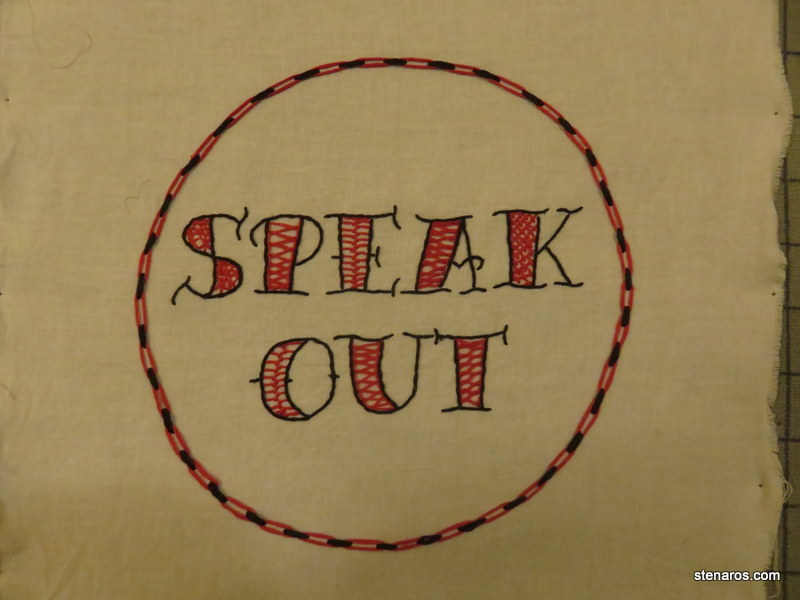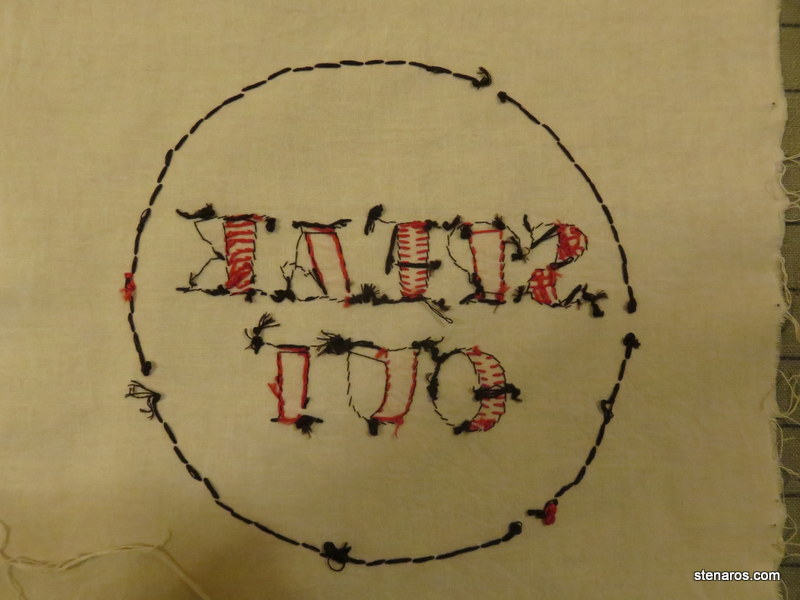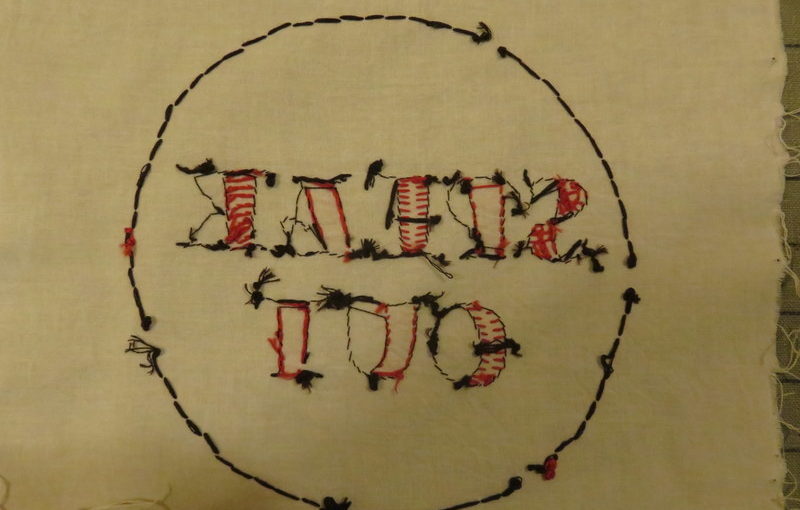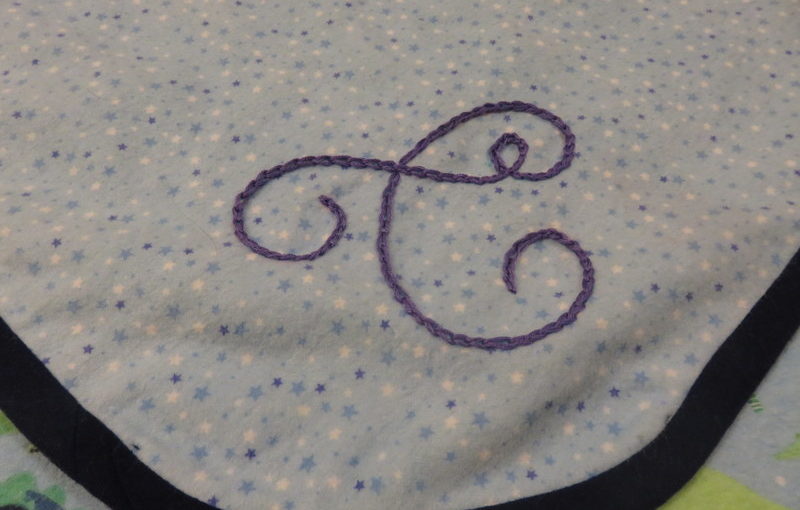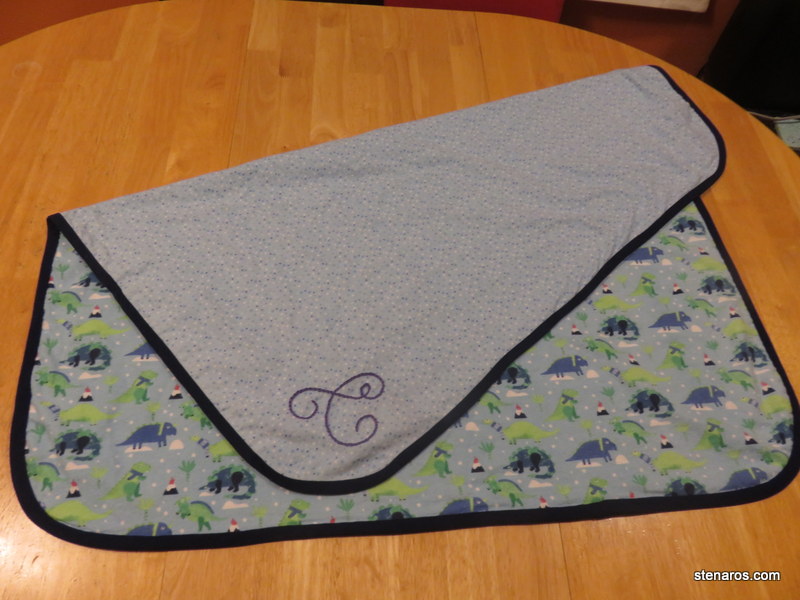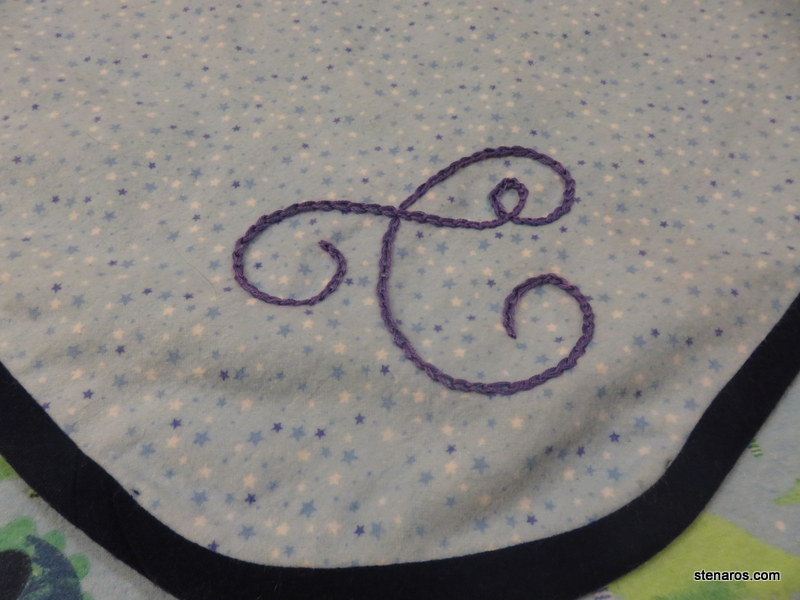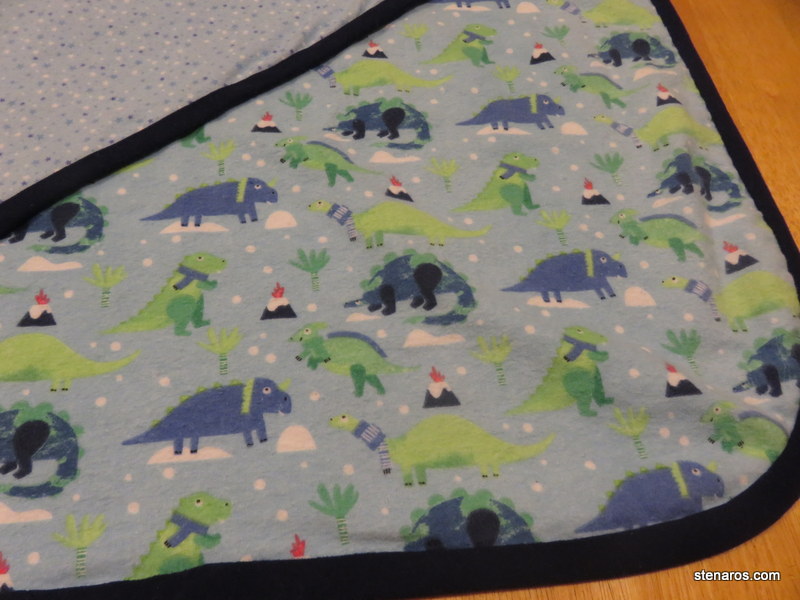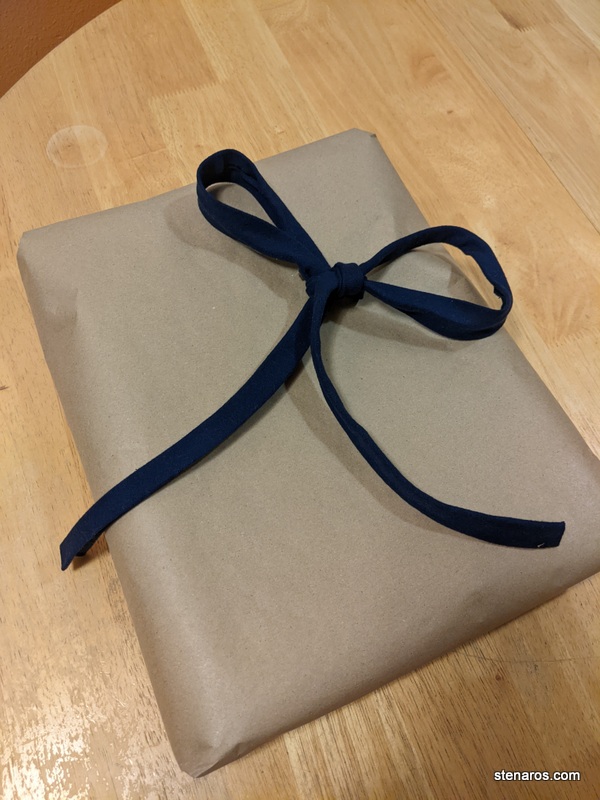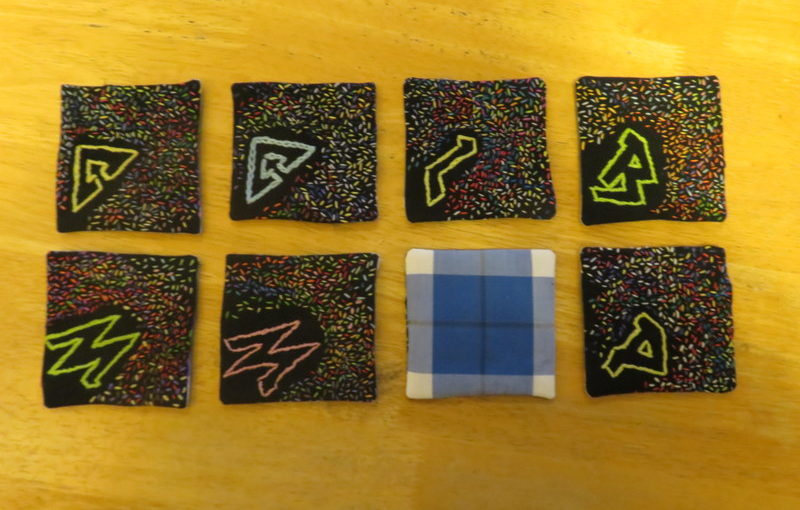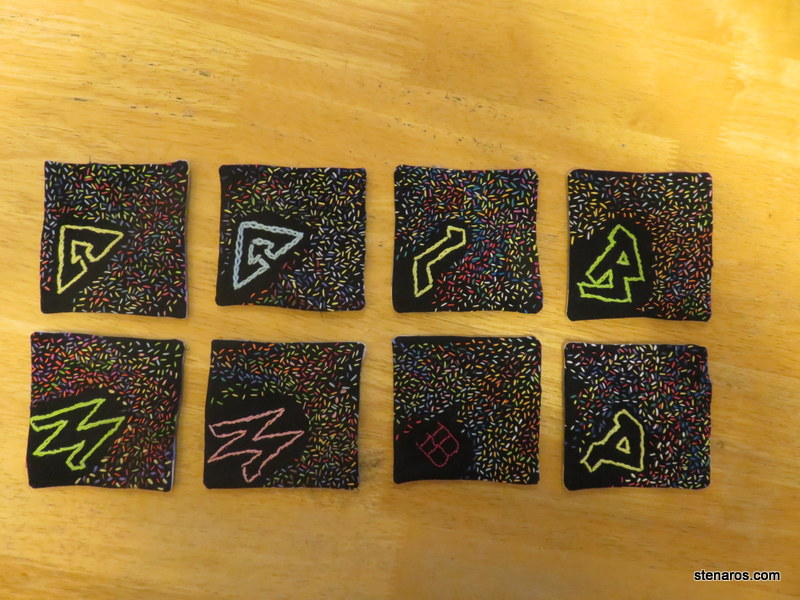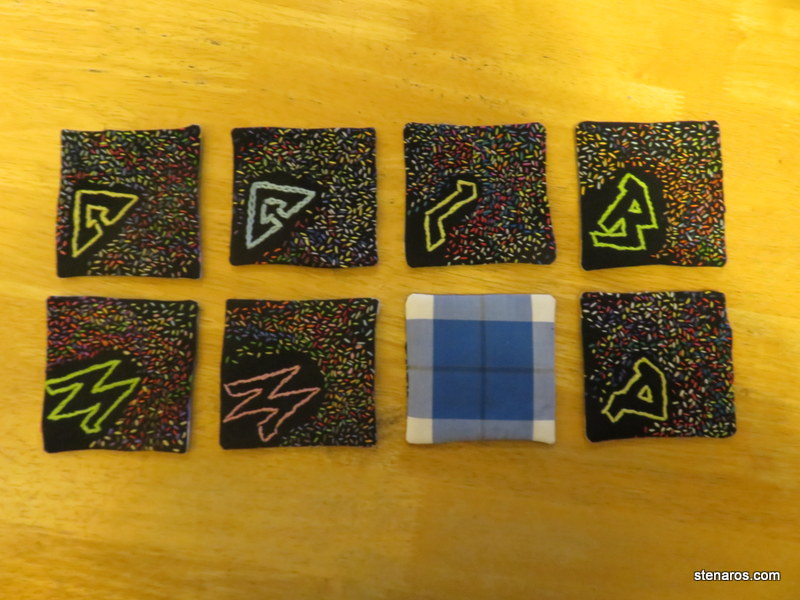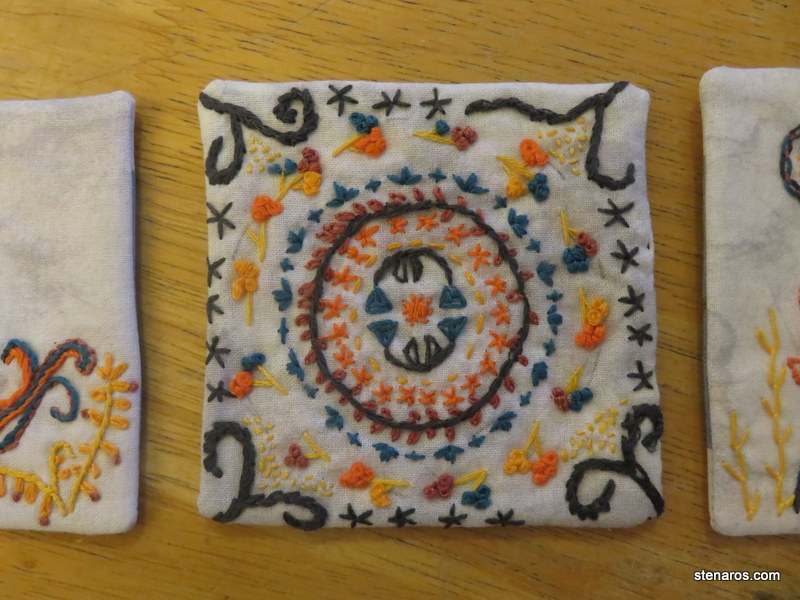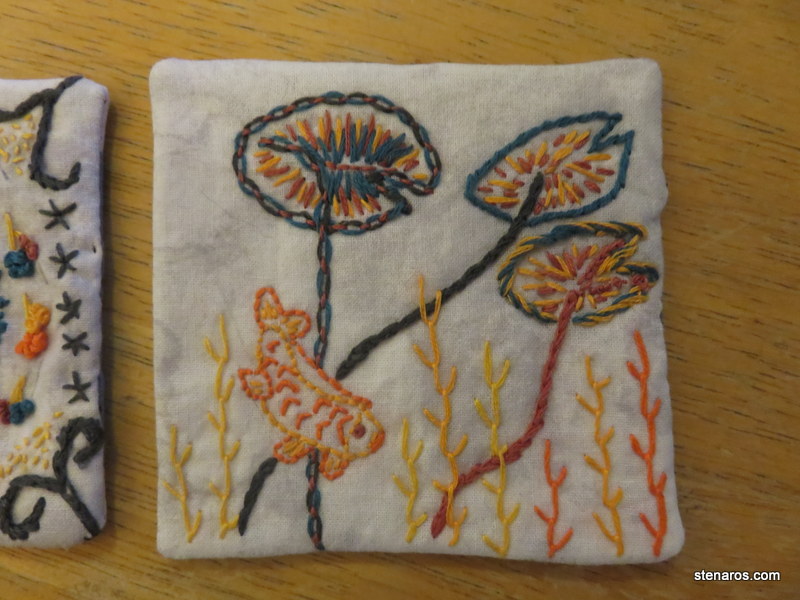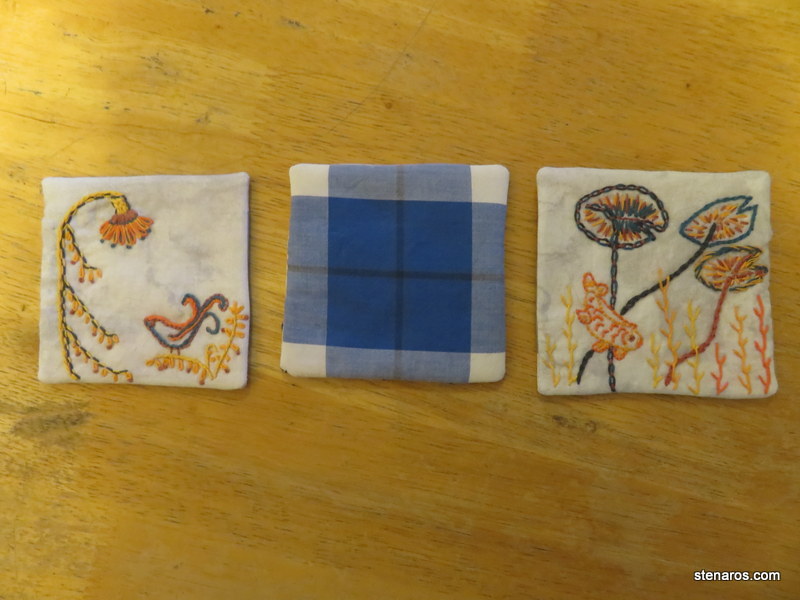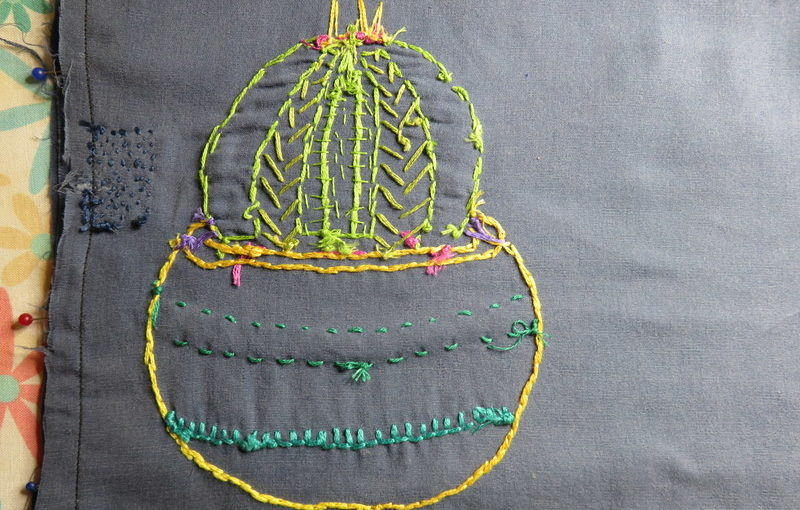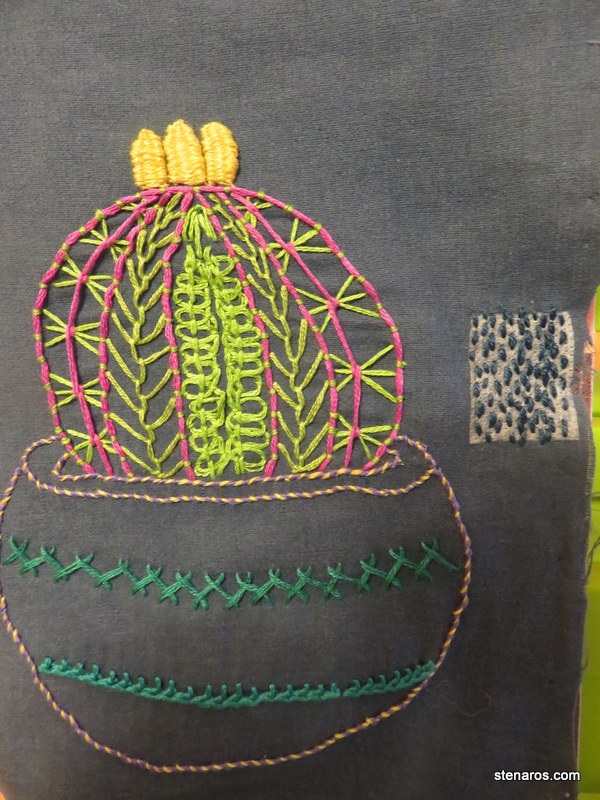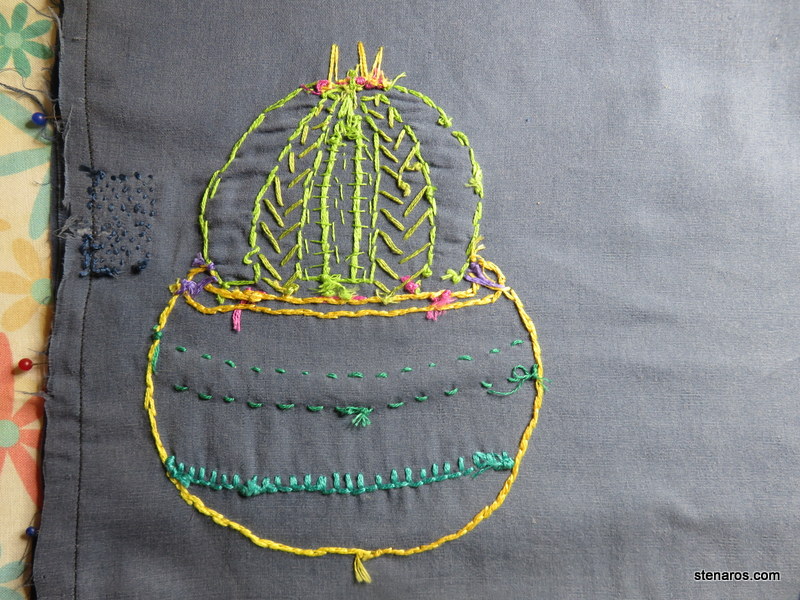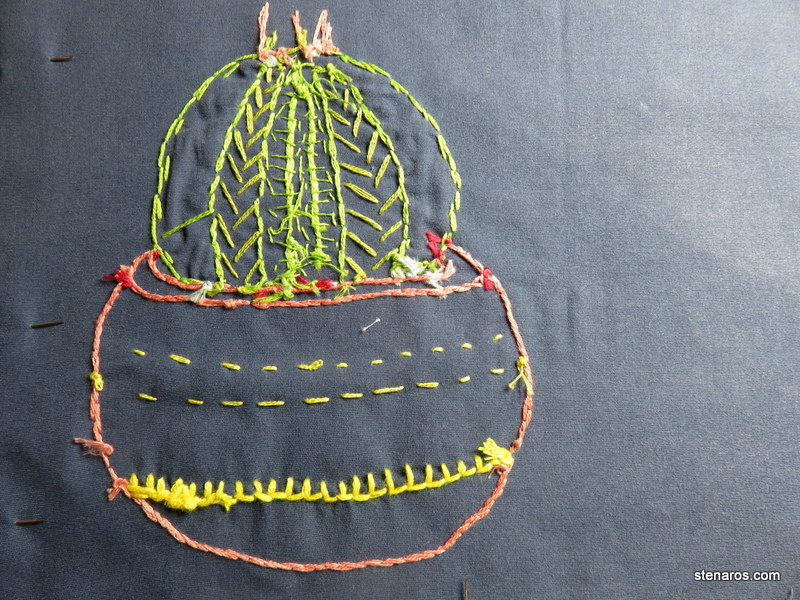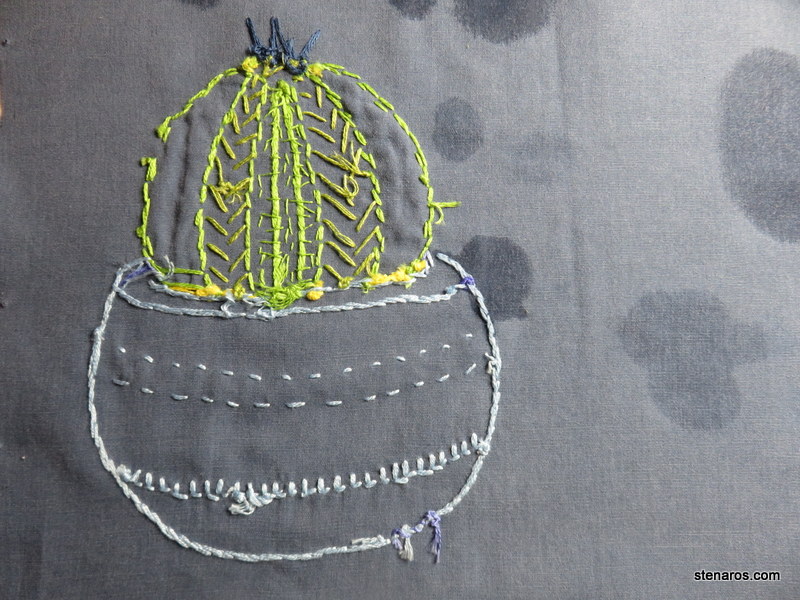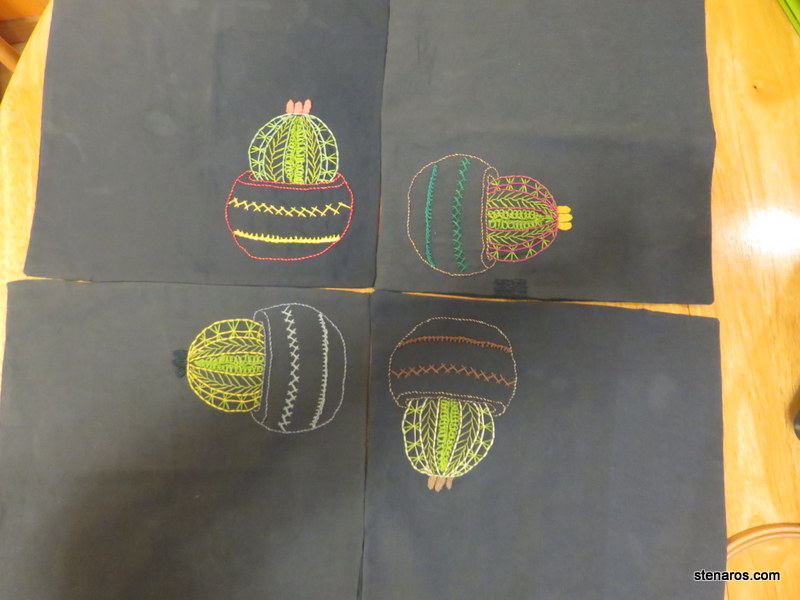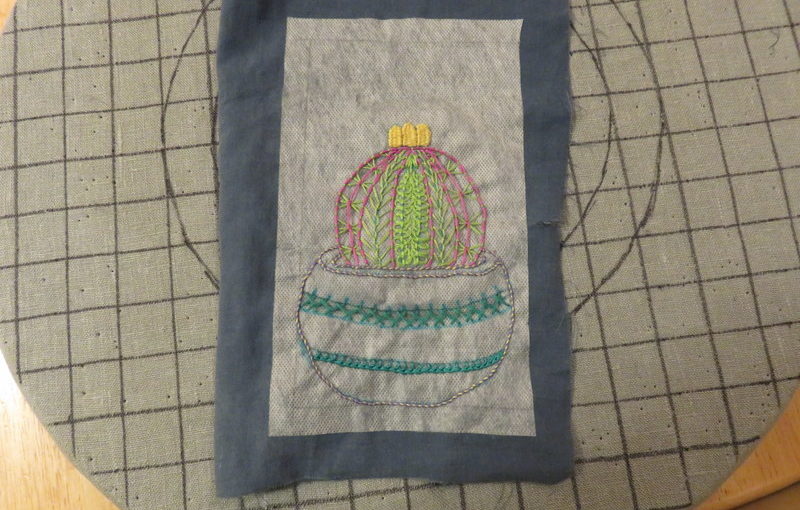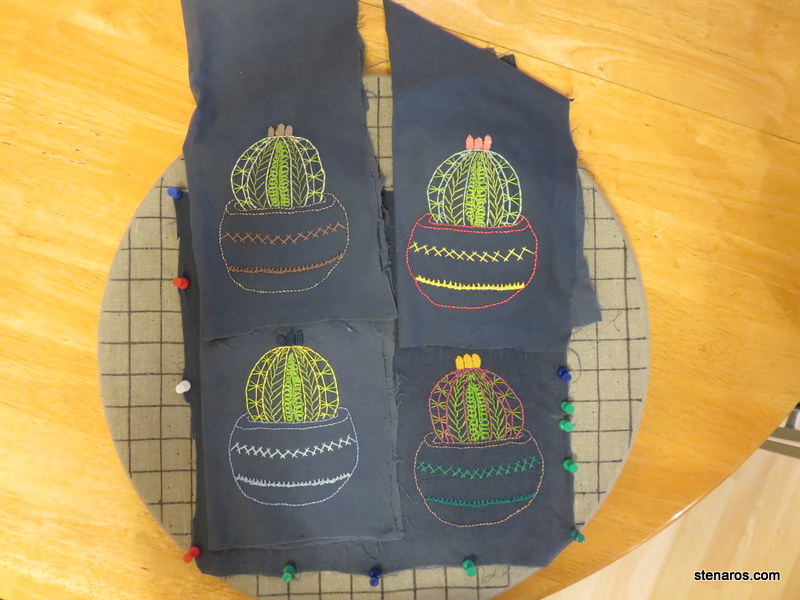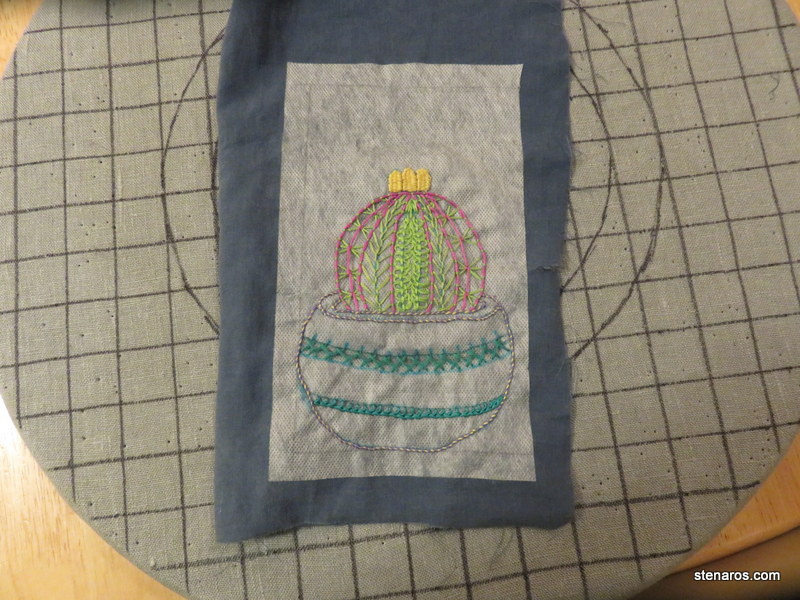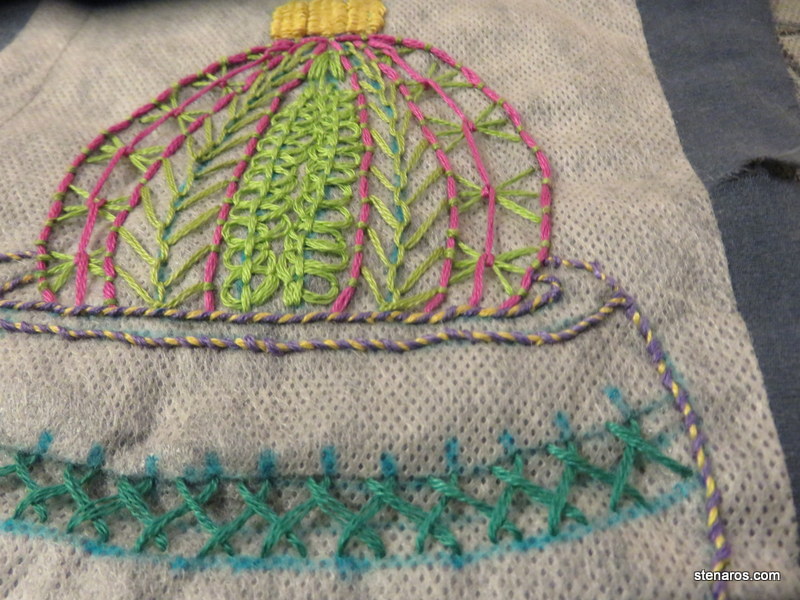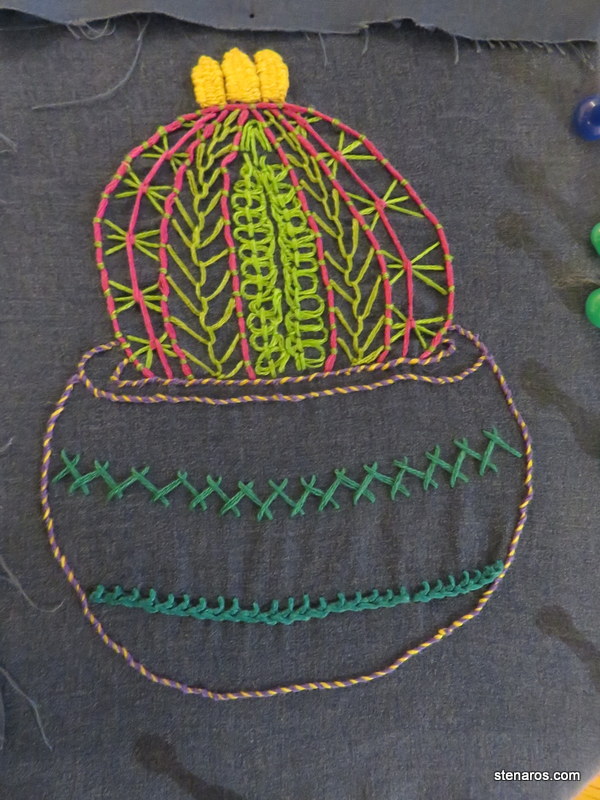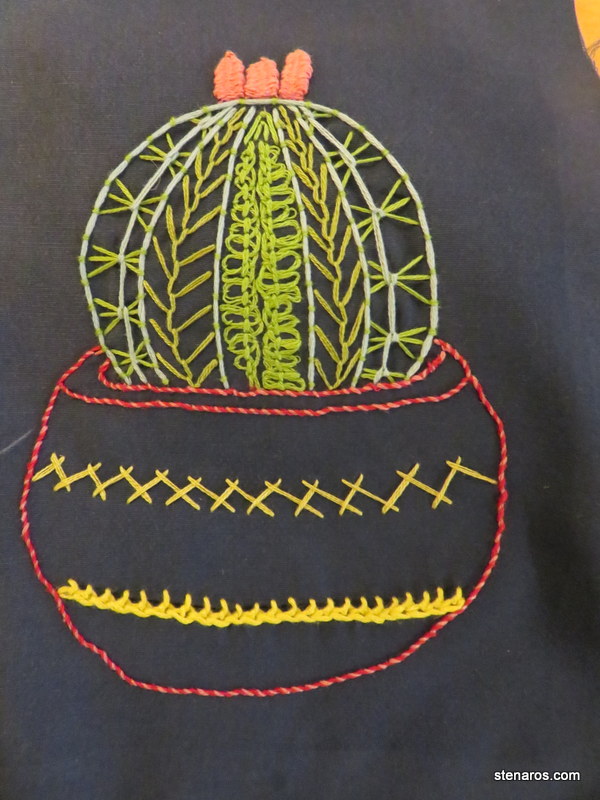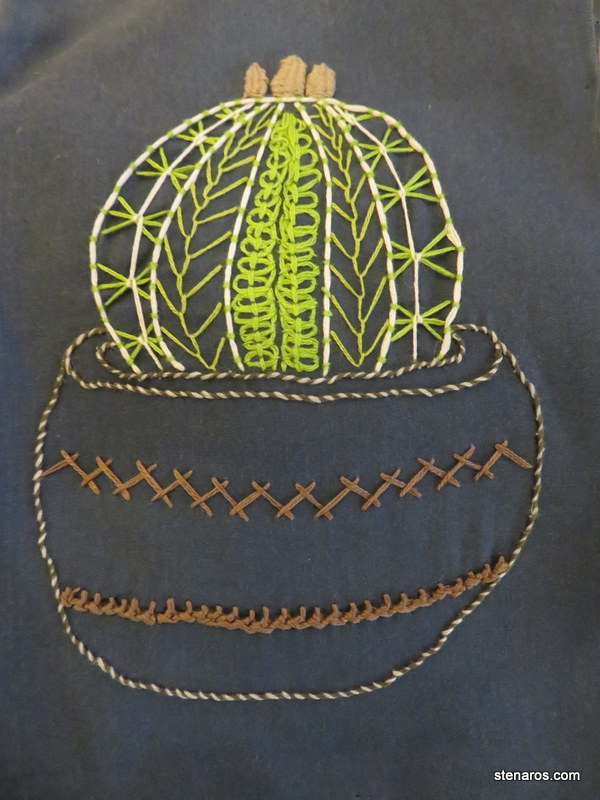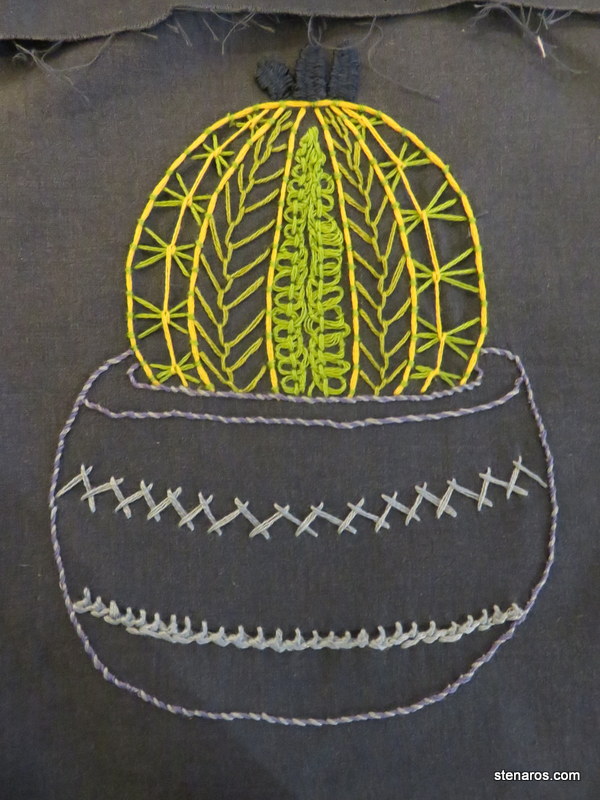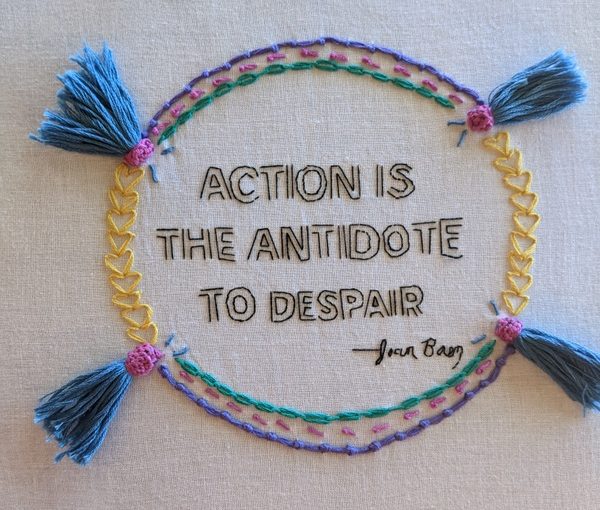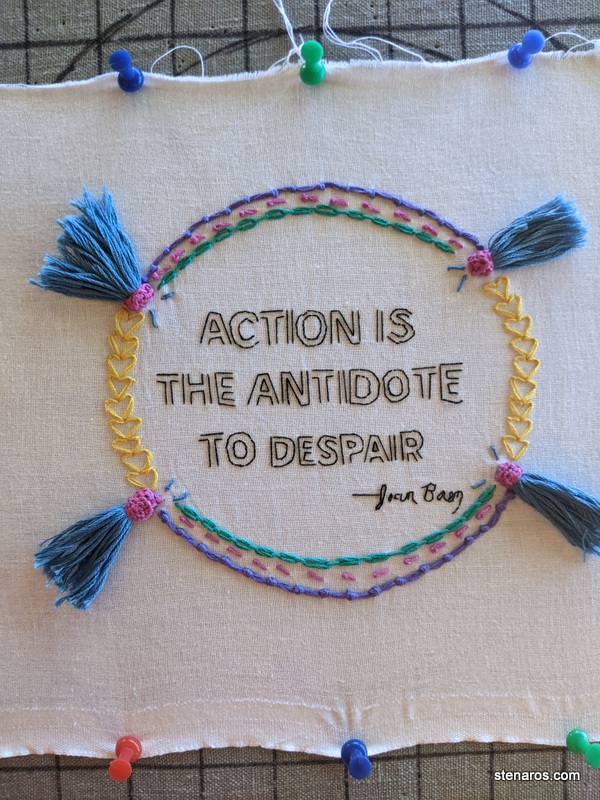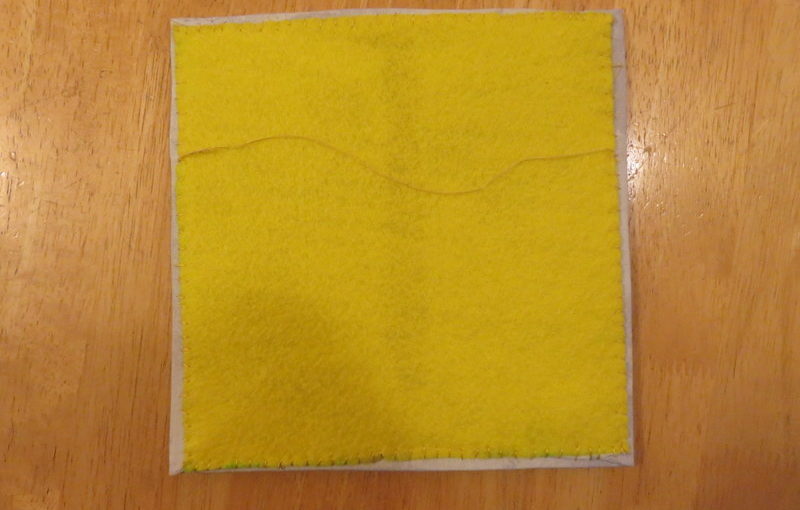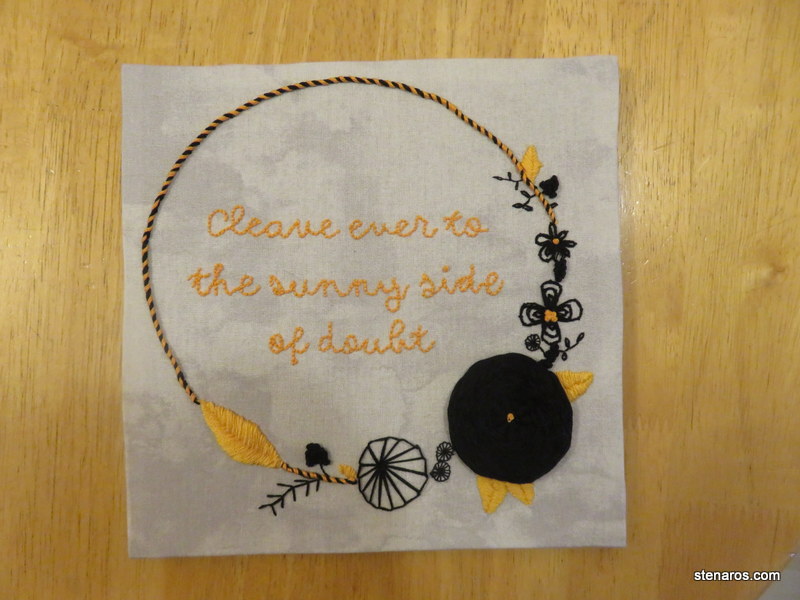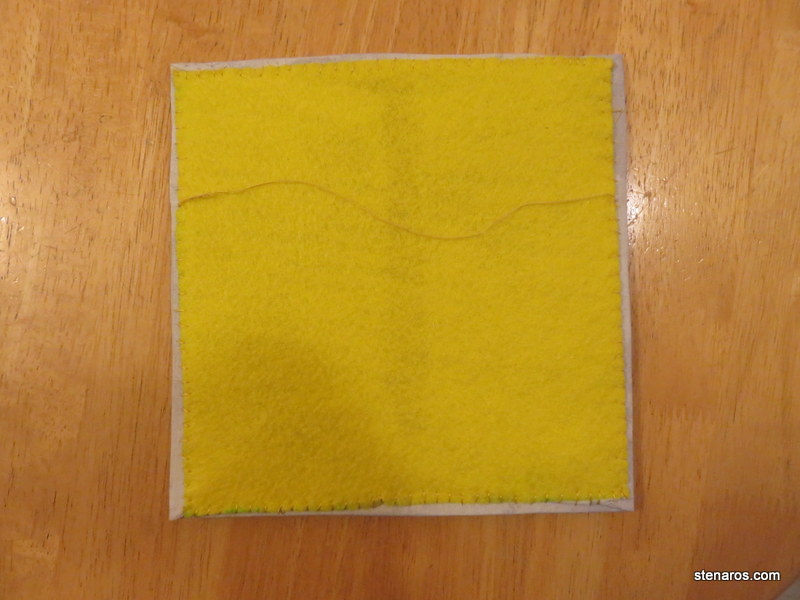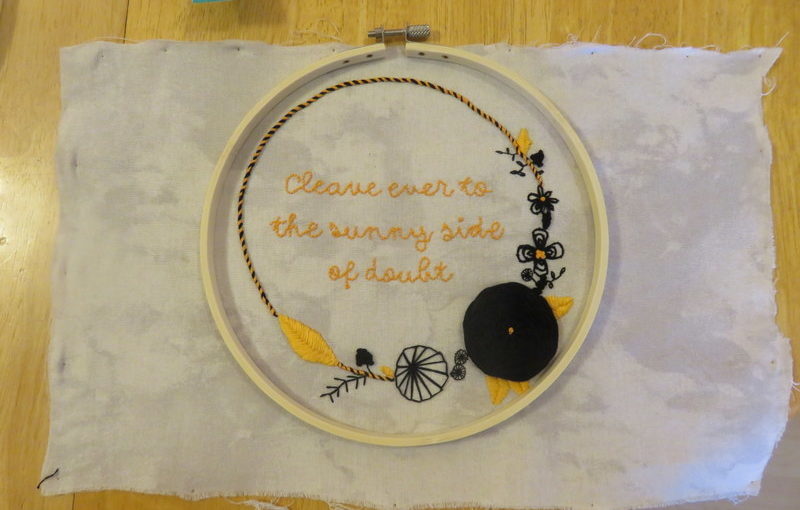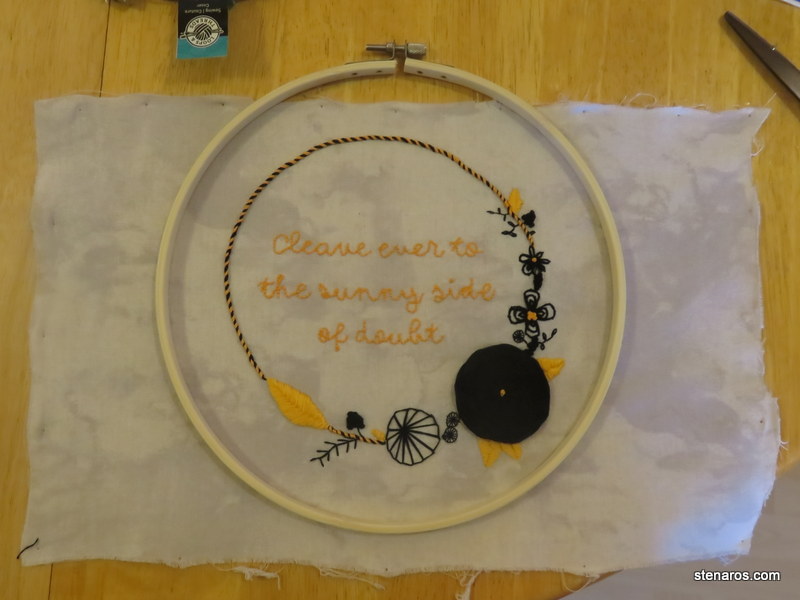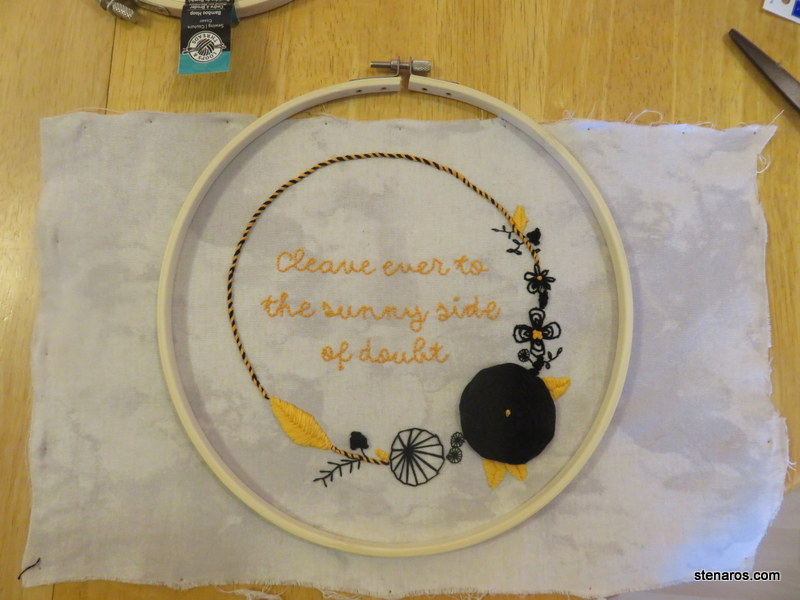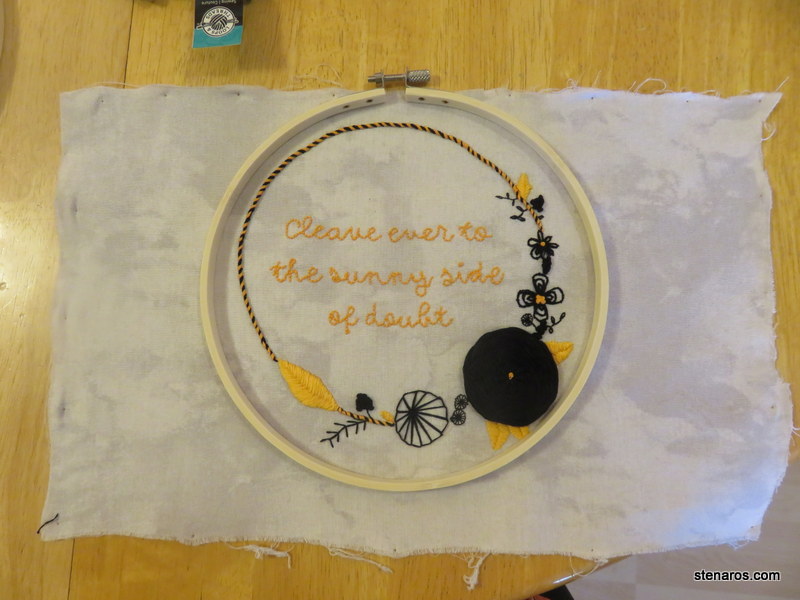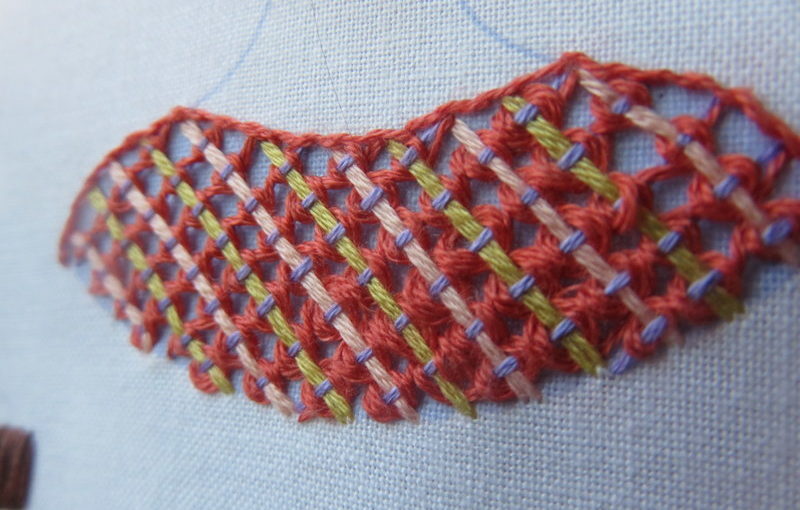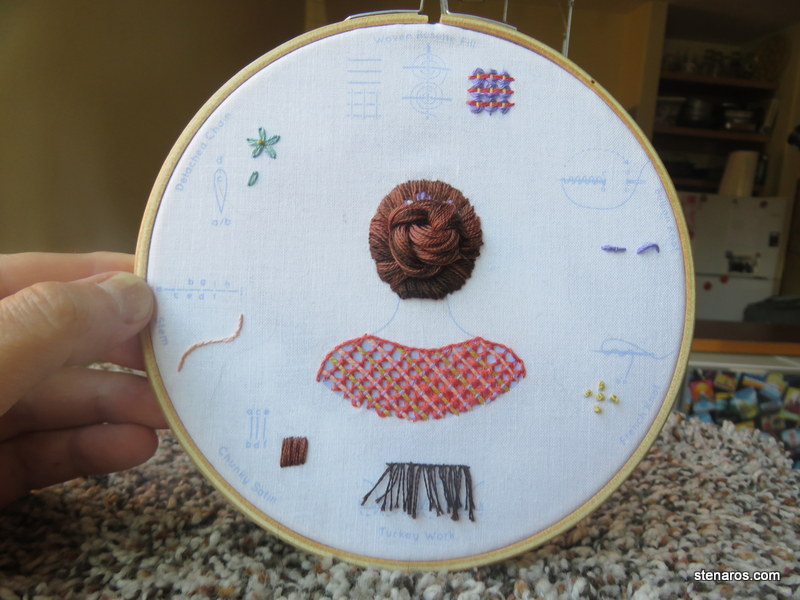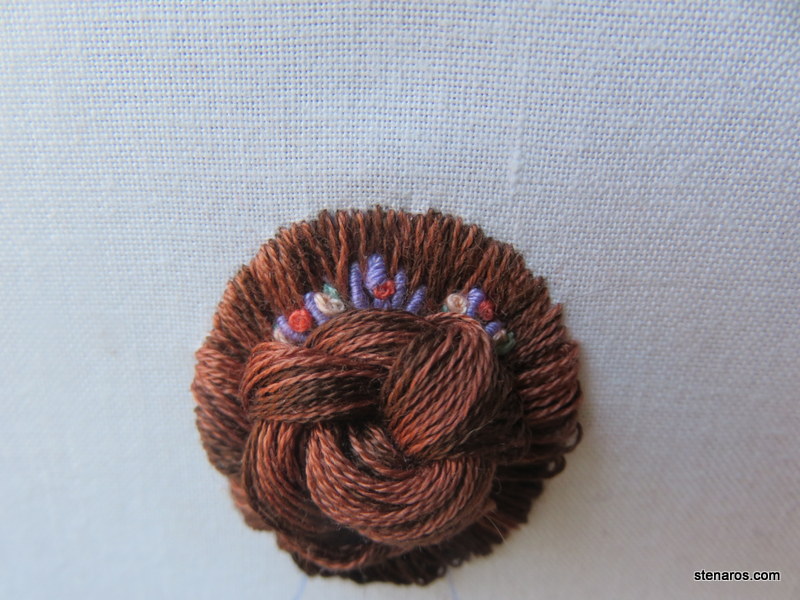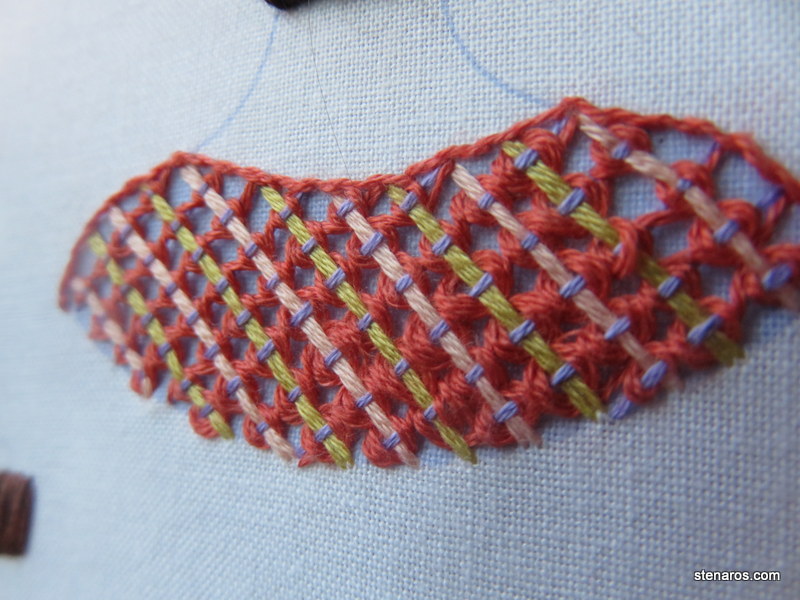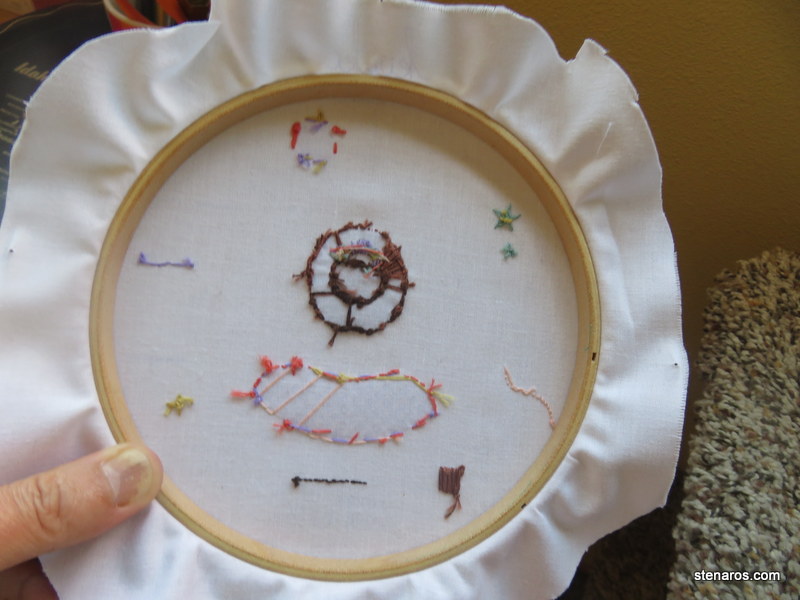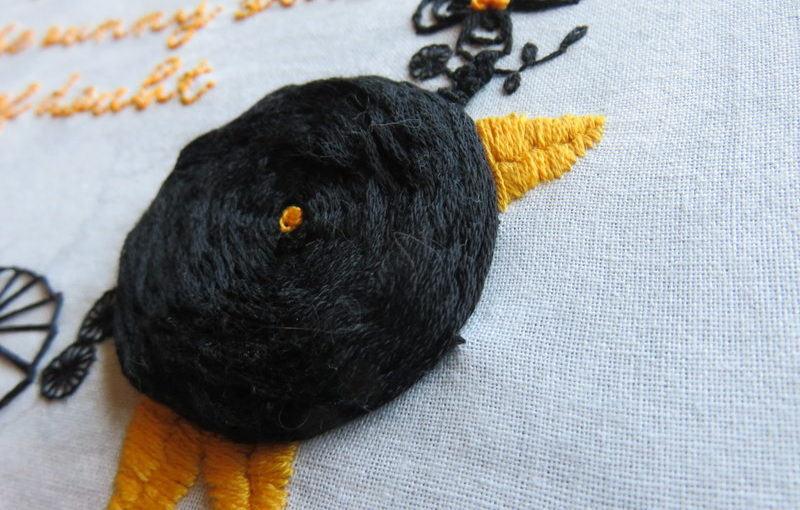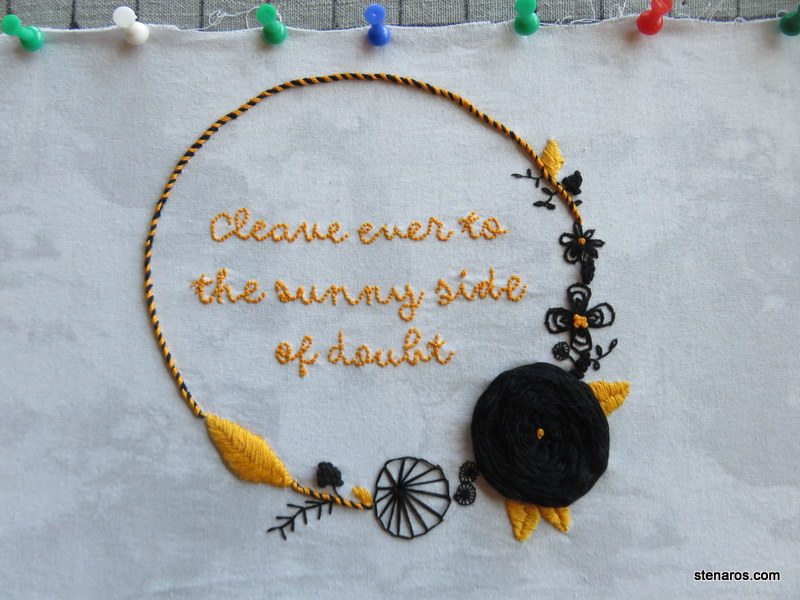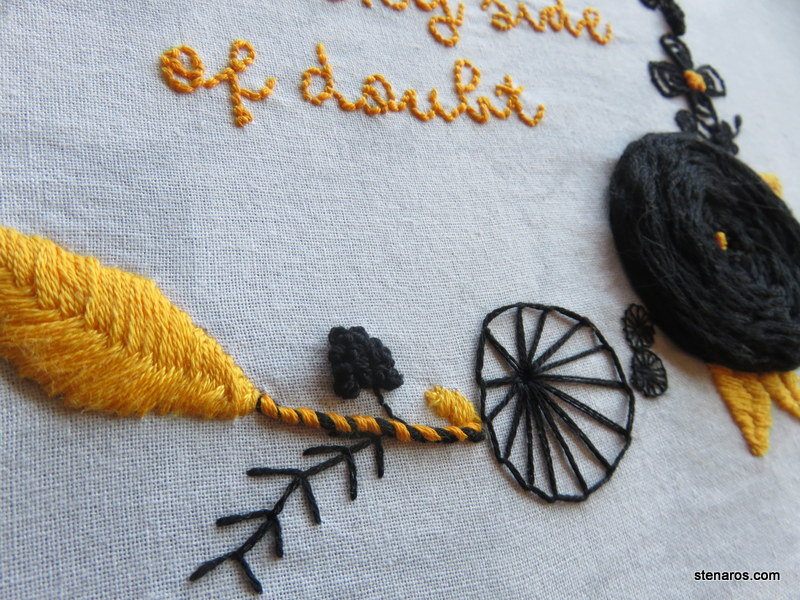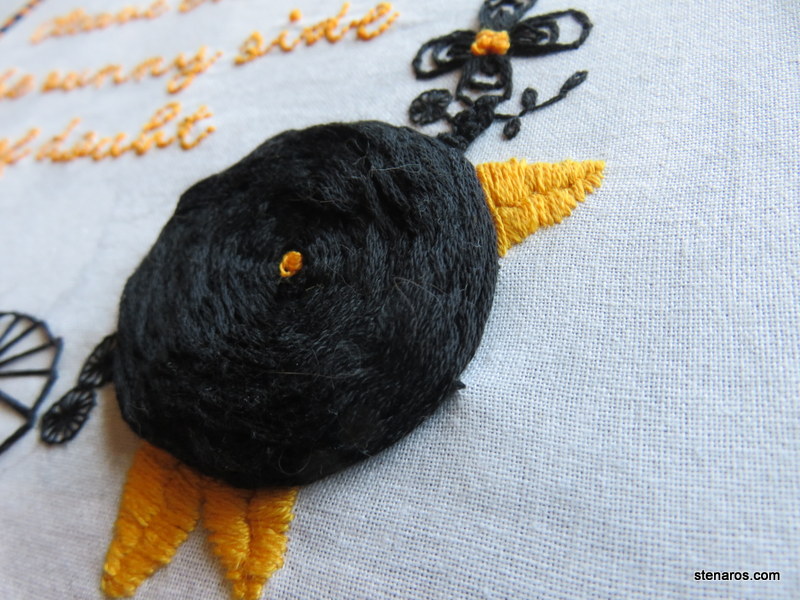I looked at the seventh sampler and thought, “There isn’t much to this one, maybe I should do four.” And so I did. (And that’s why I’m always behind.) The plan is to make them into napkins.
This was my first time using wash-away stabilizer that sticks to the fabric. That stuff is a wonder for working on dark fabrics. I traced the outline (four times) and got to work. It is hard to see how the colors actually look on the dark fabric, so fastidious people would probably want to do a test swatch.
It doesn’t feel as great as soft fabric does, but it does add a lot of sturdiness to the sewing experience.
The stitches this time are:
- Sheaf stitch (Outermost sections of the cacti)
- Pekinese stitch (Middle section of the cacti. Because this was going to be a napkin, I tacked them down)
- Feather stitch (The other section of the cacti)
- Woven picot (The cacti flowers, which were also tacked down.)
- Herringbone stitch (The upper vase decoration)
- Mountmellick stitch (The lower vase decoration.)
In addition, I outlined the cacti using couching, and the vase with whipped backstitch.
Whipped backstitch. Redeeming backstitch since January 2022, when I learned it. Uneven stitches become a swirly rope!
Overall, I loved mastering woven picot. I’m a fan of things that free stitching from the fabric. Because they were napkins, I tacked those flower petals down, but the could fly free. I found mountmellick to be a bit fussy.
For colors, I used the same two greens for the cacti and then picked colors from four different color palettes I keep on hand. The above is Stop in Santa Fe from Stitch Palettes. The one below is from the mix of colors that I got from Little Dear when I ordered my first embroidery kit. It was the summer blend. And since that blend was supplying the two greens to all four napkins, I was short on colors and added in the red and the yellow. I’m pretty sure those are two different yellows.
This is Chocolate Chip from Stitch Palettes.
This is Stitch Palettes’s Downtown Dubai.
As I was blocking the one with the bright colors, I noticed an unfortunate tear on the side that was going to make the napkin not very easy to stitch up. So that napkin stayed on the blocking device four about three weeks until I figured out the solution. Stay tuned!
